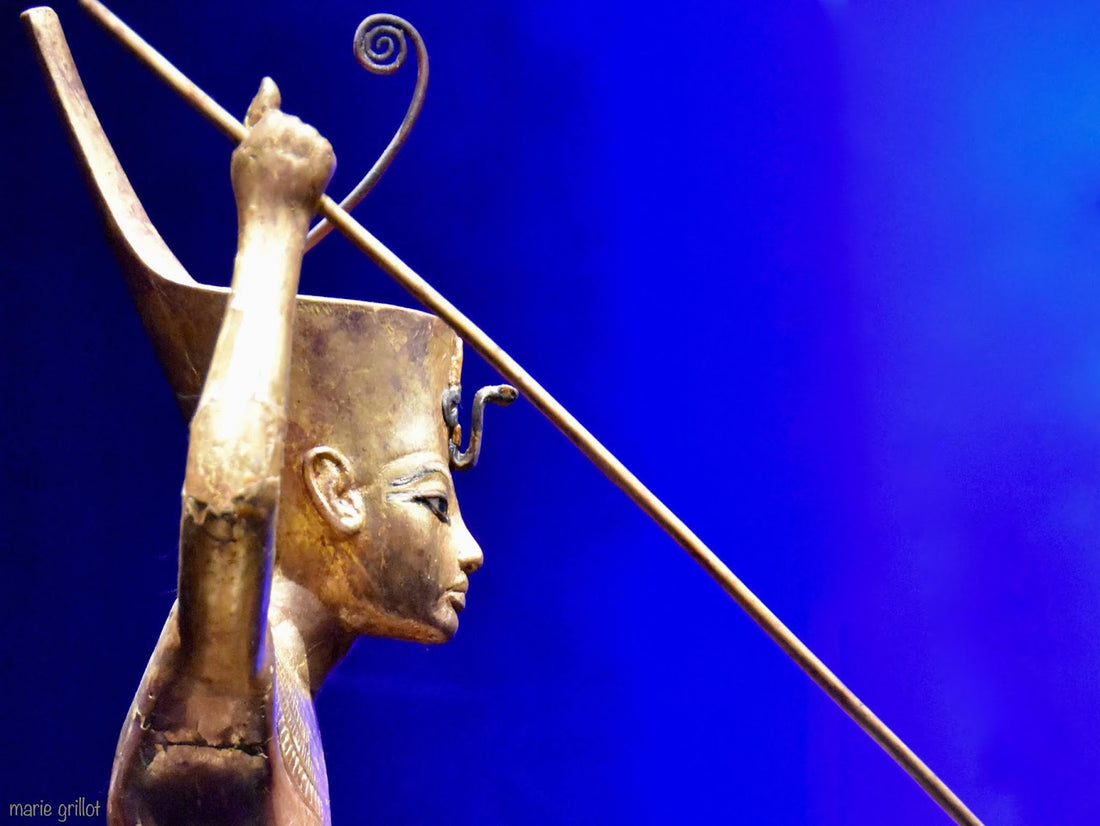
From Horus to Saint George Slaying the Dragon: A Legend with Egyptian Roots
Share
In this article, we will explore how the famous legend of Saint George slaying the dragon has its origins in ancient Egypt, particularly in the figure of Horus.
Saint George: From Harpoon-Wielding King to Legionary Horus
The image of Saint George on horseback, piercing the dragon with his spear, is universal. From Ethiopia to Russia, this representation remains remarkably consistent.
It appears almost timeless, a scene deeply embedded in the collective imagination, a battle between good and evil that transcends cultures and epochs.
And yet, behind this familiar image lies an unexpected story—one that takes us far from the medieval knights and Christian saints of Europe, and deep into the sun-scorched lands of ancient Egypt.
What if Saint George’s mighty lance was once a harpoon?
What if his fearsome dragon once lurked not in castles or dark forests, but beneath the surface of the Nile, in the form of a monstrous crocodile or hippopotamus?
To uncover the hidden origins of this legend, we must venture back thousands of years, to an era where gods and kings waged war against the forces of chaos in a strikingly different—but eerily familiar—battle.
The classic legend :
Tradition places the legend of Saint George in the Greek world, near the city of Silene in Libya. A monstrous creature was ravaging the land, forcing the local population to offer it a sacrificial animal each day. When livestock was no longer sufficient, the young men and women of the kingdom were given as tribute. Eventually, the king’s own daughter was chosen for sacrifice. It was at this moment that George appeared, mounted on his horse. He bravely faced the dragon, striking it down with his lance. He then advised the princess to tie her belt around the monster’s neck, and, miraculously, it followed her meekly back to the city.
 Paolo Uccello. Saint George and the dragon (c. 1470)
Paolo Uccello. Saint George and the dragon (c. 1470)Horus, the Harpooner of Chaos
To uncover the deeper origins of this legend, we must journey back to ancient Egypt, specifically to the 18th Dynasty (mid-14th century BCE). Among the funerary treasures of the young Pharaoh Tutankhamun, there is a striking gilded wooden figurine depicting the young ruler standing on a small basket, poised to hurl a great harpoon. This ancestral gesture, performed for centuries along the banks of the Nile, symbolizes the eternal struggle of the sovereign against chaotic forces, embodied by the crocodile or hippopotamus lurking in the depths of the river.

More than thirteen centuries later, this imagery persists in the Ptolemaic Temple of Edfu, dedicated to Horus. Here, the solar god, represented in human form with the head of a falcon, stands tall on the deck of his sacred boat, plunging a long harpoon into an ensnared hippopotamus—an incarnation of Seth, the god of chaos. The beast’s diminished size compared to the towering figure of Horus highlights the god’s supreme power, reinforcing his role as a divine protector and relentless vanquisher of disorder.

Capturing the hippopotamus, temple of Edfou
The Evolution of the Myth and Its Roman Adaptation
With the expansion of the Roman Empire, this archetypal battle scene was reinterpreted to align with the cultural fusion between the conquered peoples and their Roman rulers. The monstrous opponent evolved into a crocodile, a nod to Egypt’s own symbolic bestiary. Meanwhile, the triumphant figure retained his human form but preserved his divine essence through his falcon-headed visage.
A key transformation took place in this iconography: Horus, once depicted as standing on the deck of his boat, was now represented as a Roman cavalryman mounted on horseback—an image entirely foreign to traditional Egyptian art. A remarkable transitional representation, housed in the Louvre Museum, captures this shift: a Roman horseman with a falcon’s head, striking down a crocodile, the personification of evil.
From Byzantium to Russia, and eventually to Western Europe, this imagery spread and evolved. Over time, the Nile-dwelling adversary was replaced by a dragon, a mythical beast more familiar to European audiences.

A providential transitional image is provided, in Roman times, where "Horus the Savior" appears dressed as a Roman legionnaire and mounted on horseback. He is, however, recognizable by his falcon head. The hippopotamus is replaced by the Nilotic crocodile.
